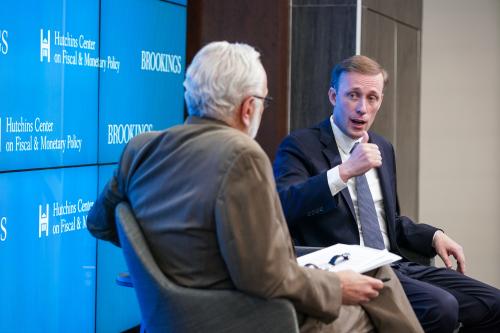After worsening sharply during the Great Recession, the long-term fiscal outlook generally improved through 2015, due to a combination of legislative acts and lower projected growth of health care spending. The same factors and the slow but steady economic recovery helped reduce short-term deficits over that period as well.
Over the past year, though, the medium- and long-term fiscal outlooks have deteriorated.
Part of this is due to legislative changes, part to changes in economic and technical factors, and a small part to changes in assumptions. This deterioration has happened without much fanfare and, even with a fall in projected interest rates working in the other direction, the estimated changes are large.
Our estimates of various fiscal measures from last September and now are summarized in Table 1. Under current policy, we project the debt-GDP ratio to be 91 percent in 2025, up from a projection of 81 percent made last September and compared to the current-year value of 75.6 percent. The projected debt-GDP ratio in 2040 has increased to 152 percent of GDP, compared to 120 percent last Fall. Our estimates of the fiscal gap – the spending or tax changes needed to bring about a fiscal balance – have also increased. The fiscal gaps through 2040 have risen by about 1.0-1.5 percent of GDP, depending on various assumptions. The permanent fiscal gap has risen by similar amounts.
The trends underlying the 10–year projections are familiar. Revenues hover at about 18 percent of GDP. Total spending is projected to rise by almost 3 percentage points of GDP – with entitlements accounting for about 1.7 percentage points of the increase and net interest for 1.9 percentage points, with discretionary spending declining by about 0.6 percent of GDP.
The projected rise in net interest payments relative to GDP reflects higher initial debt levels and an expected rise in interest rates as the economy grows. The deterioration in the budget outlook has occurred despite the fact that CBO reduced projections of future interest rates. There is considerable uncertainty over the path of interest rates, however, and much recent discussion of the notion that interest rates will remain low for an extended period of time. To put this possibility in context, we examine a scenario where interest rates stay constant at current levels for the next 25 years – through 2041 – rather than rising as projected by CBO.
Lower interest rates, of course, reduce net interest payments, but even with flat interest rates, the fiscal situation is headed in the wrong direction. The current policy projections with flat interest rates show the debt-GDP ratio rising to 110 by 2041. Even with low interest rates, the fiscal gap just to maintain the current debt-GDP ratio in 2041 is 1.8 percent. To reduce the ratio to its 1957-2007 average of 36 percent by 2041 would require spending cuts or tax increases of 3.6 percent of GDP. Thus, while low interest rates may reduce net interest payments in the near term, they do not put federal debt on a sustainable path.











